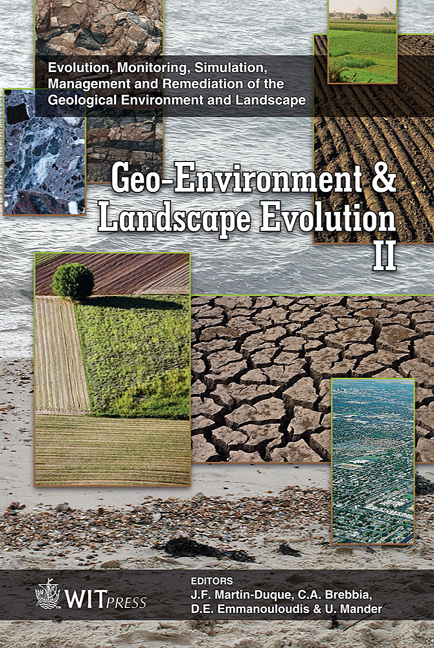Using Spatial Technology For Analyzing Disturbed Areas And Potential Site Selection In Chihuahua, Mexico
Price
Free (open access)
Transaction
Volume
89
Pages
9
Published
2006
Size
335 kb
Paper DOI
10.2495/GEO060401
Copyright
WIT Press
Author(s)
V. M. Tena, A. C. Pinedo, A. H. Rubio, P. de L. G. Barragán, A. A. Pinedo, M. V. Hernandez & C. Velez
Abstract
The objectives were to: 1) analyze the physical-chemical variables of a site in order to characterize the disturbed area’s suitability for planting; 2) detect disturbed areas through spectral transformation techniques; and 3) generate cartographic maps with the location of the disturbed areas suitable for planting. The field data, Landsat TM 7 images, and digital elevation models were analyzed with IDRISI and ArcView. Multivariate Cluster Analysis, and Principal Components Analyses were applied to valuate the biometric and physicalchemical variables of the soil, and detection of disturbed areas. Physicalchemical analyses showed similar characteristics for the whole area in the study; only soil depths are considered important for the establishment of forest plantations. The combination of bands 3, 4 and 5 allowed detection of, in a preliminary way, the disturbed areas. The Principal Component Analysis showed that the first component reduced the dimensionality of the data while the second component detected the disturbed areas. Keywords: reforestation, disturbed areas, detection, spatial, Chihuahua, México. 1 Introduction Worldwide, deforestation is associated with increasing demands for forest products due to increased human populations [1]. Mexico has a deforestation rate estimated at 600,000 hectares per year [2]. This is one of the highest rates of
Keywords
reforestation, disturbed areas, detection, spatial, Chihuahua, México.





